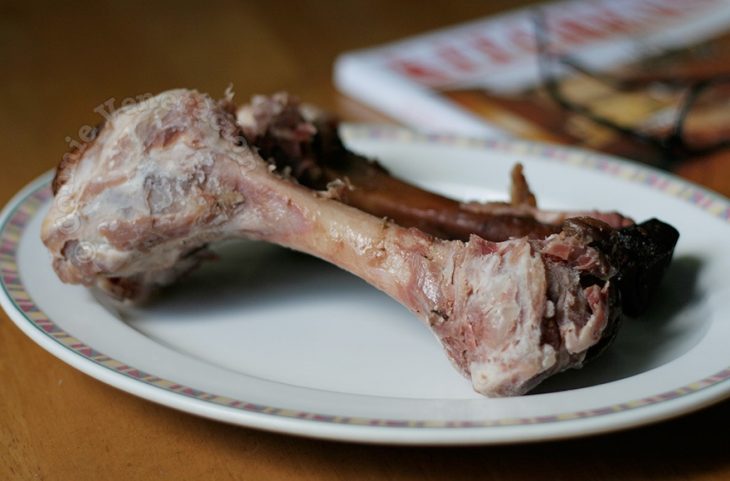I am quite certain that I have extolled the virtues of ham bone more than once but it’s about time that I dedicate an entire post about it rather than mentioning it as an aside in recipes.

Note that I use the term “ham bone” which consists of two words. “Hambone” has a different meaning. In fact, it has several meanings. It is a place in California, it is a bowling term and it is the name of a blues musician (said to be ill-tempered, went to prison and was beaten to death there). Hambone is also the nickname of a now deceased person who, during his lifetime, weighed 1,000 pounds.
So, we’re talking about “ham bone” here. Two words. Ham bone is the bone in bone-in ham.
Humans don’t eat bones. Our teeth and jaws are not constructed to bite and chew them. So, more often than not, after the meat from a leg of ham has been consumed, the bone is thrown away. And that is such a waste.
If you’re familiar with how ham is made, you’d know that the process involves curing which may be dry-salting or wet-salting (brining) and, often, smoking and/or drying. The longer the curing, the more flavorful the ham. And, in the case of bone-in ham, it isn’t just the meat the absorbs flavors and aromas. The bone benefit as well.
How do you draw out the flavors from ham bone?
With long and slow cooking. The longer you simmer ham bone, the more flavorful the cooking liquid and all other ingredients in the pot.
The slow cooker is the ideal tool for the job although other heavy cookers such as a Dutch oven will yield an equally good result.
How do you use the liquid in which ham bone has simmered in for hours and hours?
1. As a base for gravy;
2. As the cooking liquid for stews and meat sauce for pasta; and
3. As the broth in soups.